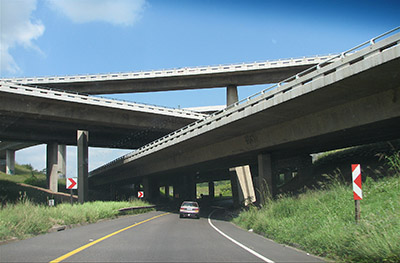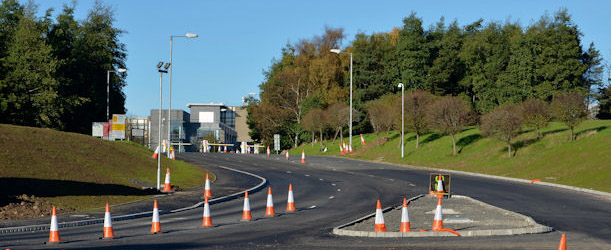Senate Democrats roll out a $1 trillion infrastructure proposal
Senate Democrats say their plan is expected to create 15 million jobs, with $210 billion allocated towards repairing aging roads and bridges and $200 billion for “a vital infrastructure plan” to finance transportation projects of national significance.”

Various media outlets reported this week that United States Senate Democrats are stepping up to the plate in offering up a ten-year, $1 trillion infrastructure plan.
This comes on the heels of President Donald Trump talking on the campaign trail, about a “trillion-dollar rebuilding plan” that would be “one of the biggest projects this country has ever undertaken, which he said would be funded through low interest rates and infrastructure bonds.
One of the things Trump made clear in his acceptance speech after election night was that a national commitment to infrastructure could no longer be ignored or overlooked. “We are going to fix our inner cities and rebuild our highways, bridges, tunnels, airports, schools, hospitals,” he said. “We’re going to rebuild our infrastructure, which will become, by the way, second to none. And we will put millions of our people to work as we rebuild it.” And his inauguration speech included similar comments.
The Senate Democrats plan, according to an Associated Press report, is expected to create 15 million jobs, with $210 billion allocated towards repairing aging roads and bridges and $200 billion for “a vital infrastructure plan” to finance transportation projects of national significance.”
The New York Times reported that the plan Senate Democrats plan dedicates $180 billion to rail and bus systems, $65 billion to ports, airports and waterways, $110 billion for water and sewer systems, $100 billion for energy infrastructure, and $20 billion for public and tribal lands.
In the AP report Senator Minority Leader Chuck Schumer, D-NY, said that “Senate Democrats are walking the walk on repairing and rebuilding our nation’s crumbling infrastructure. We ask President Trump to support this common sense, comprehensive approach.”
Where things go from here remains to be seen, as Trump has not released a formal plan yet, but one thing that is certain is that how a national infrastructure plan gets funded will likely prove to be a point of contention between the White House and Senate Democrats either way.
While details are unclear, administration officials are floating some $137 billion in tax credits to infrastructure investors. It’s estimated these tax credits would generate an estimated $1 trillion in private sector investment over 10 years.
But whether that $1 trillion would go to the most-needed infrastructure jobs––or merely those that produce the biggest revenue streams to investors––is an open question.
Incoming Transportation Secretary Elaine Chao has said it’s time to “unleash the potential” of private capital to modernize that infrastructure. She said at her confirmation hearing before the Senate Commerce, Science and Transportation Committee that economic gains are being jeopardized by infrastructure "in need of repair, the specter of rising highway fatalities, growing congestion, and by a failure to keep pace with emerging technologies."
Chao said it’s time to take advantage of what she called new "innovative financing tools" that can "take full advantage of the estimated trillions in capital that equity firms, pension funds, and endowments can invest." This, she added, would be a “bold, new vision” for transport.
In a recent interview, Katie Thomson, head of the Transportation Industry Group at Washington, D.C.-based law firm Morrison & Foerster. Thomson and former general counsel at the U.S. Department of Transportation and chief counsel at the Federal Aviation Administration, explained that what the U.S. transportation system needs is a long-term funding solution that meets the needs of the country as a whole.

“It cannot be a one-off, one-time injection of a lot of money for certain big projects in limited parts of the country,” she said. “An initial infusion for that could be good, but it needs to be a long-term, comprehensive, [multi]modal fix. And I am very concerned that is not going to be where the focus of the administration is. They are going to want to get some quick wins and call it a success. I do not view that as meaningful investment that this country so desperately needs to drive the economy and ensure that people and goods can get where they need to be in a safe and efficient way.”
Thomson told LM today that she is excited about the Democratic proposal because it represents the opening salvo in what will be a heated debate over infrastructure priorities and funding.
"But, as a practical matter, I don't think it means much until the White House and Republicans engage," she said. "Also, it does not identify the 'pay for' in any detail, and [House Speaker] Paul Ryan has said he doesn't expect to even discuss funding until they take up the budget in the spring. Having said that, I'm glad that someone took the initiative to tee up the key issues."

Article Topics
News & Resources
Latest in Materials Handling
Beckhoff USA opens new office in Austin, Texas Manhattan Associates selects TeamViewer as partner for warehouse vision picking ASME Foundation wins grant for technical workforce development The (Not So) Secret Weapons: How Key Cabinets and Asset Management Lockers Are Changing Supply Chain Operations MODEX C-Suite Interview with Harold Vanasse: The perfect blend of automation and sustainability Consultant and industry leader John M. Hill passes on at age 86 Registration open for Pack Expo International 2024 More Materials HandlingAbout the Author
Subscribe to Materials Handling Magazine

Find out what the world's most innovative companies are doing to improve productivity in their plants and distribution centers.
Start your FREE subscription today.
April 2024 Modern Materials Handling

Latest Resources










